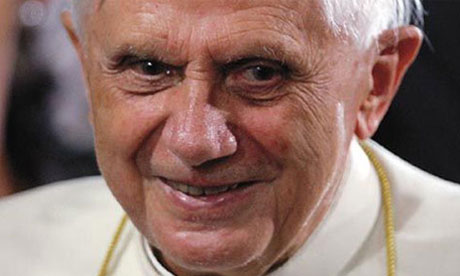The profound changes, historical, are not always the most spectacular. What just happened this week in Rome is like a palace revolution unimportant but it is highly significant. Because it confirms the direction taken by the papacy of Benedict XVI and the entire Catholic Church.
In a word, Rome has “taken over” a whole sector of activity of the Catholic Church. That humanitarian assistance and its thousands of Catholic NGOs. Technically, the “Caritas” (for France, Secours Catholique and the CCFD). They were all united in meeting global 22 to May 27 for the 60th anniversary of their foundation.
An immense body: the 165 Caritas coordinate each in their countries, many humanitarian organizations that provide Catholic concrete help (social, educational, medical …) to 24 million people. They employ 440,000 employees, not counting the 625,000 volunteers who donate their time. An admirable job, proximity and constancy under all latitudes, often misunderstood, sometimes despised. A huge machine but whose totatement decentralized budget, mostly from private donations but also from public funds, around 4 billion euros.
At this meeting the Holy See has not only decided not to renew the appointment of Lesley-Ann Knight, Secretary General of Caritas Internationalis (the central organization based in Rome), a woman deemed too independent.
But in addition, the Vatican has “reframed” the general policy of the organization. He asked not to be considered, in humanitarian action, the Catholic Church as a sort of partner, but preferred among others, but his essential being. The very meaning of the reason for its social commitment.
In other words, the social action of the Catholic Church can not be technically disconnected from the central body of the Catholic faith. This action must be clearly identified Catholic.
Benedict XVI receives the congress today, said: “For us Christians, God himself is the source of charity, and charity is understood not only as a vague philanthropy, but as self-giving, even up to sacrifice his own life for others to imitate the example of Jesus Christ. ” He added: “The Holy See has the task of monitoring its activity [that of Caritas] and to ensure that both its humanitarian and charity lecontenu documents available, are in full harmony with the Apostolic See and with the Magisterium of the Church, and be administered competently and transparently. ”
He also asked this warning: “The experience you have amassed over the years has taught you to let you voice in the international community, anthropological vision of a healthy, nourished by Catholic doctrine and committed to defending the dignity of every human life. Without a transcendent basis, without reference to God the Creator, without regard to our eternal destiny, we risk falling prey to harmful ideologies. ”
At the beginning of the congress, Cardinal Tarcisio Bertone, Secretary of State of the Holy See, was questioned even before the Congress “for humanitarian assistance that would exclude the Christian identity and adopt an approach, so to speak, neutral, who seek to please everybody “because” the Church must not only about charity, but do like Christ. ”
African Cardinal, Robert Sarah, who by his presidency of the Pontifical Council Cor Unum, oversees all charitable activities of the Catholic Church, was lambasted at the same conference: “A Caritas, which is not an expression has ecclesial no meaning or existence. (…) The bread is important, freedom is important, but the most important thing of all is our faith in the God of Love and our kneeling to worship and serve serving the poor. ”
But why this reminder to those working in humanitarian – on behalf of the Catholic Church that they do not depend on a neutral NGO but a Catholic organization fully with all that that implies, is so important?
It indicates two things:
- What Benedict XVI continues his work of internal reform of the Catholic Church according to the course it set itself in 2005: to restore its “Catholic identity” to a Church that ended by doubting itself after Vatican II reviving the ancient tradition.
- He did, visibly, in terms of the liturgy by allowing the rite of Mass in Latin as the missal of 1962, as “extraordinary” the Roman rite. He has done a less visible by the appointment of bishops rather classic profile and probably less socially engaged than some of their predecessors. It addresses today the bastion of social action of the Church which are actually incurred and beautifully – it must be said and greet as there is often lack of volunteers – many Catholics do not recognize forcemenent in this line of Benedict XVI.
This revival, and this crop will be criticized and fought internally, but Benedict has already shown that nothing could stop his will – he considered his highest responsibility theologian pope – to make the Catholic Church … Catholic.
Source: A palace revolution at the Vatican, which says a lot about the pontificate
Originally written in French. Translated to English by Google!
